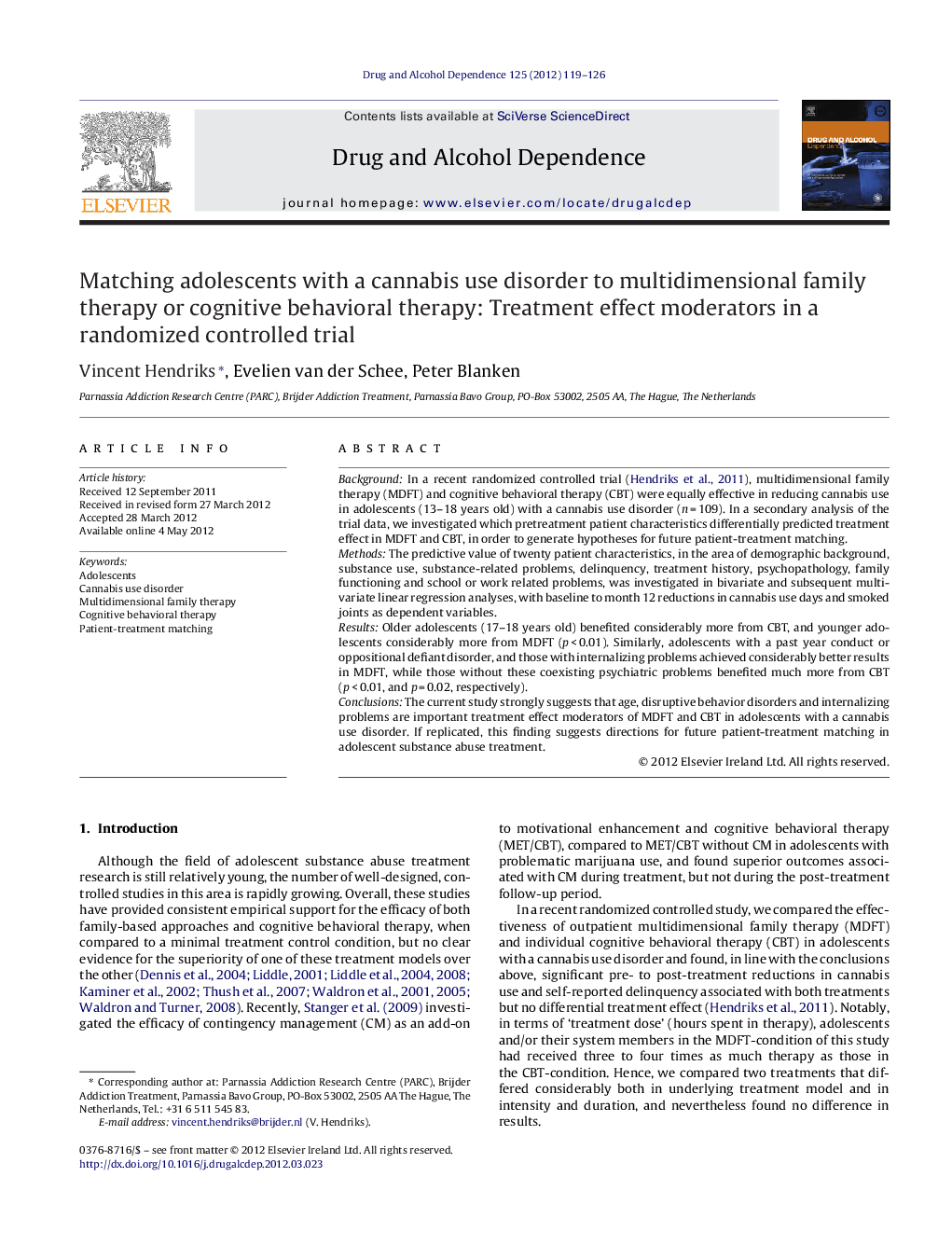| Article ID | Journal | Published Year | Pages | File Type |
|---|---|---|---|---|
| 1070089 | Drug and Alcohol Dependence | 2012 | 8 Pages |
BackgroundIn a recent randomized controlled trial (Hendriks et al., 2011), multidimensional family therapy (MDFT) and cognitive behavioral therapy (CBT) were equally effective in reducing cannabis use in adolescents (13–18 years old) with a cannabis use disorder (n = 109). In a secondary analysis of the trial data, we investigated which pretreatment patient characteristics differentially predicted treatment effect in MDFT and CBT, in order to generate hypotheses for future patient-treatment matching.MethodsThe predictive value of twenty patient characteristics, in the area of demographic background, substance use, substance-related problems, delinquency, treatment history, psychopathology, family functioning and school or work related problems, was investigated in bivariate and subsequent multivariate linear regression analyses, with baseline to month 12 reductions in cannabis use days and smoked joints as dependent variables.ResultsOlder adolescents (17–18 years old) benefited considerably more from CBT, and younger adolescents considerably more from MDFT (p < 0.01). Similarly, adolescents with a past year conduct or oppositional defiant disorder, and those with internalizing problems achieved considerably better results in MDFT, while those without these coexisting psychiatric problems benefited much more from CBT (p < 0.01, and p = 0.02, respectively).ConclusionsThe current study strongly suggests that age, disruptive behavior disorders and internalizing problems are important treatment effect moderators of MDFT and CBT in adolescents with a cannabis use disorder. If replicated, this finding suggests directions for future patient-treatment matching in adolescent substance abuse treatment.
